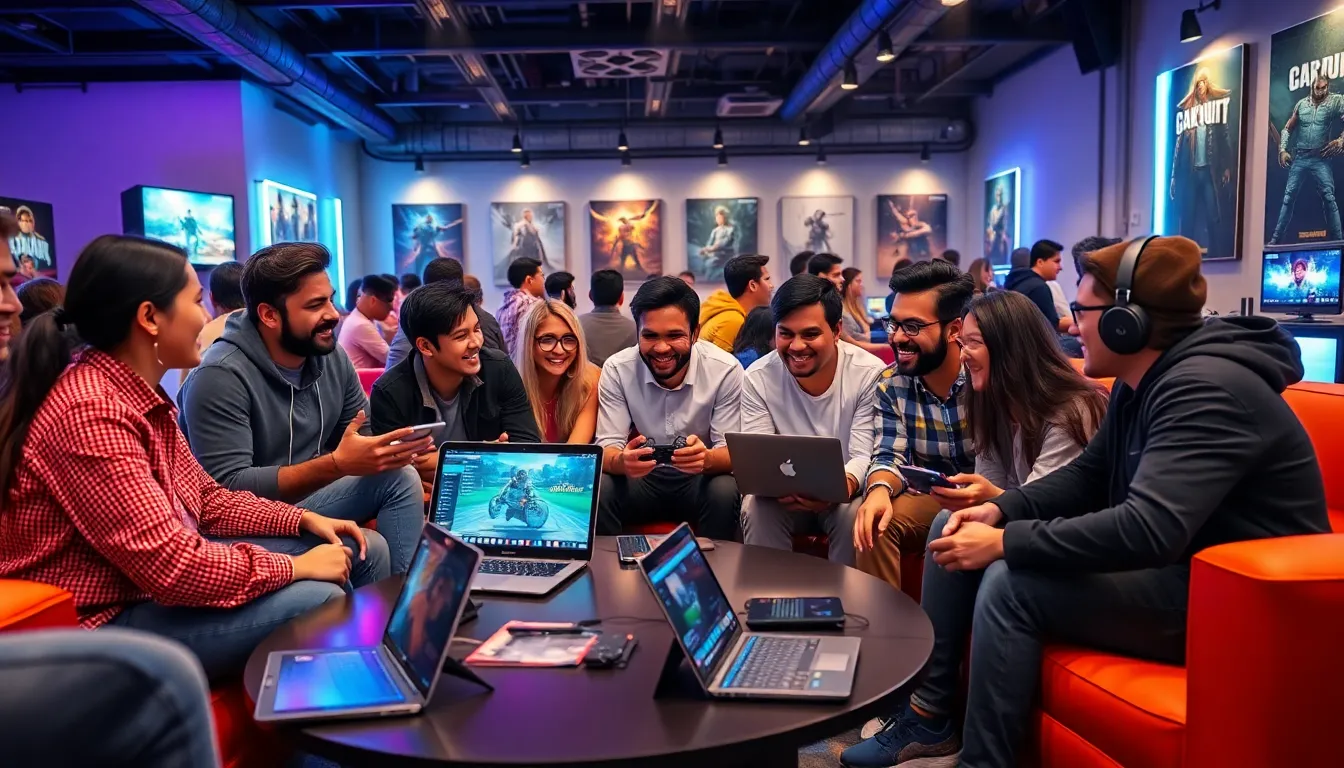Imagine a world where your best friends are just a click away, and you can bond over a virtual game of Monopoly without ever needing to don real pants. Welcome to the era of social gaming. It’s not just about smashing your opponent in Candy Crush: it’s about building connections, competing, and sharing adventures with friends near and far. As technology and innovation collide, social gaming has evolved beyond mere pastime to become a significant part of how people interact in our increasingly digital society. Buckle up, because we’re about to dive deep into the exciting universe of social gaming and discover what makes it tick.
Table of Contents
ToggleWhat Is Social Gaming?

Social gaming refers to video games that help social interactions among players. This includes cooperative gameplay, where friends band together to defeat enemies, and competitive scenarios, such as multiplayer battles where players face off against one another. It’s more than just pressing buttons: it’s about shared experiences. Gone are the days of solo gaming sessions in dimly lit rooms. Today, gamers engage through chat rooms, forums, and even video calls while fostering camaraderie over their favorite titles. Platforms like Facebook, Twitch, and Discord have become hotbeds for social gaming, allowing players to create communities and connect with people worldwide. From casual games like Words with Friends to immersive worlds in RPGs, social gaming taps into the fundamental human desire for connection.
The Evolution of Social Gaming
Social gaming didn’t crop up overnight. It has a rich history that mirrors the growth of technology itself. In the early days, gaming was predominantly a solitary experience. Games like Pong and Space Invaders were single-player affairs. Fast forward to the 1980s and 90s, and local multiplayer experiences like Mario Kart began to emerge, allowing friends to battle it out on the same screen. These were the seeds of social gaming, paving the way for the renaissance that followed. Then came the internet revolution in the late 90s and early 2000s, allowing players to connect from anywhere on the globe. Titles like World of Warcraft transformed gaming into a social experience, cementing social interaction as an integral aspect. Today, mobile gaming has skyrocketed, with titles that seamlessly integrate social features. Indeed, social gaming has undergone a remarkable transformation, evolving from isolated play into an all-encompassing community experience.
Key Features of Social Games
Understanding what makes social games tick is crucial. First and foremost, interactivity is key. Players chat, collaborate, and strategize together. This can occur in real-time or asynchronously, enabling players to connect at their own convenience. Next is the concept of competition and cooperation. Many games allow friends to compete against one another or team up to tackle challenges, creating captivating dynamics. Another feature is the integration of social media sharing. Players often share victories, achievements, or even frustrations on platforms like Instagram or Twitter, bringing a sense of pride to their gaming exploits. Gamification elements, such as leaderboards and rewards for sharing gameplay, further enhance engagement and motivate continued participation. Finally, virtual economies often play a significant role. Many games allow users to trade items or currency, making the social aspect even more intertwined with the gameplay.
The Impact of Social Gaming on Relationships
Social gaming can significantly influence relationships, both online and offline. For some, it fosters deeper connections with friends. Imagine collaborating with your best friend to conquer a difficult level in a game that you both enjoy, leading to inside jokes and treasured memories. For others, it opens doors to new friendships. Gamers can meet people with similar interests, forming bonds that transcend geographical boundaries. But, the influence isn’t wholly positive. The addiction to social gaming can lead to isolation, where players might prioritize virtual interactions over real-life relationships. The key lies in balance. When enjoyed responsibly, social gaming can bring people together, enhance teamwork, and create shared experiences that enrich lives.
The Future of Social Gaming
Looking ahead, the landscape of social gaming seems to be bursting with potential. Advances in virtual reality (VR) technology promise to transport players into fully immersive virtual worlds, where players can interact with each other in more lifelike ways. Augmented reality (AR) also holds exciting possibilities, allowing gamers to engage with elements in their real environment. Blockchain technology and NFTs are beginning to shape aspects of social gaming, creating unique ownership opportunities and new economic models. As gaming continues to evolve, so too will its social structures and capabilities. Developing communities around specific games may become even more common, and gaming companies will continue to innovate, creating experiences that not only entertain but also strengthen connections.
Challenges in Social Gaming
Even though its many benefits, social gaming faces some hurdles. One significant challenge is ensuring online safety. As interactions take place with strangers, issues like harassment, cyberbullying, and toxic behavior are prevalent. Gaming companies are continually striving to create safe environments for players through better moderation tools and community guidelines. Another issue is the potential for addiction. The captivating nature of social games can lead some players to neglect their responsibilities and relationships. Awareness and education about healthy gaming habits are essential. Finally, the balance of competitive play versus a friendly atmosphere is crucial. Developers must design games that promote sportsmanship while still being competitive, ensuring that the social aspect remains enjoyable.


